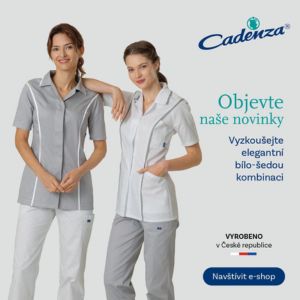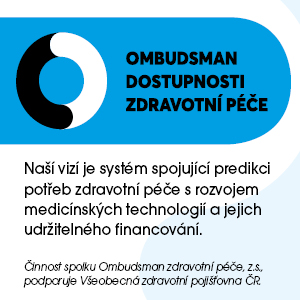


Číslo 4 / 2021
Nurses Key Role in Pressure Ulcer Prevention
A bed sore, also known as a pressure ulcer, develops when there is too much unrelieved pressure or friction on one part of the body. Th is condition is more common in bedridden patients, who spend a long time in one position, for example, because of paralysis, illness, old age, or frailty.
Nursing Management of Pressure Ulcer or Bedsores:
– Position the patient every 2 hours to stop pressure ulcer forming.
– When repositioning the patient, look at all areas of the skin daily. (Regular inspection of the following areas is required: sacrum, heels, elbows, a temporal region of skull, shoulders, and toes).
– Prevent friction and shearing forces during repositioning and transfers of the patient.
– Avoid raising the head of the bed more than 30 degrees to prevent the patient from sliding down the bed.
– Support the legs with a cushion below the knees and never place cushions or pillows directly under the knees.
– Heels must be suspended off the bed using gel pads or pillows.
– Provide pressure reduction via the use of cushions, foams, or mattress overlays.
– Avoid the use of plastics (underpads and diapers), choose liner or fabric instead.
– Avoid massage and vigorous rubbing of bony prominences.
– Reposition tubes and face masks every two hours.
– Keep the skin dry and moisture-free. Wash skin daily and apply a barrier cream.
– To reduce the risk of skin damage, consider using a skin moisturizer to hydrate dry skin.
– Avoid applying lotion between toes.
– Use pH balanced soaps or skin cleansers to clean skin and wash skin gently with water.
– Inspect for risk areas of redness and warmth as the beginning signs of pressure ulcer forming.
– Investigate the incontinence of the patient; develop and implement an individualized continence management plan.
– Cleanse the skin promptly following episodes of incontinence.
– Maintain adequate nutrition and hydration for high or very highrisk patients and be referred to a dietician for a nutritional assessment and appropriate dietary recommendations.
– Provide high nutritional support to prevent or correct nutritional deficits such as to achieve positive nitrogen balance and to maintain serum albumin levels.
– Manage pain properly so that the patient can be able to move or be moved at frequent intervals.
– Determine accurate topical wound care based on assessment findings to promote healing.
– Assess and recommend appropriate dressing or support surfaces.
– Protect the area from friction, shear, and maceration using a transparent film dressing or thin hydrocolloids.
– Use solid or liquid barriers to protect peri-wound skin from maceration damage.
– Irrigate with normal saline using a 20–35 ml syringe and 19-gauge needles or angiocath.
– Place 4 × 4 gauze packed loosely and fi ll dead space with appropriate filler (including sinus tracts).
– Protect from contamination by using an absorbent outer semiocclusive dressing.
– Provide appropriate debridement of non-viable tissue and do not debride stable hard dry eschar in ischemic limbs.
– Develop useful procedures and policies that are researched and evidence-based to advance the clinical practice of nursing staff .
– Provide patient and family education on prevention and management of pressure ulcers.
– Consult wound care specialist or physician to evaluate wounds that show signs of infection or fail to progress.
– Use oral antibiotics or antibiotic cream to help treat an infection.
SLOVNÍČEK
key – klíčový, hlavní, základní, významný; klíč
role – role, úloha; funkce, postavení
unrelieved – nepolevující; jednotvárný
friction – tření, frikce; napětí
bedridden – upoutaný na lůžko
shearing forces – smykové síly
to avoid – vyhýbat se, vyvarovat se
degree – stupeň; míra
to slide – sklouznout; klouzat se; uklouznout; posunout
cushion – poduška, polštář
to suspend – zavěsit; odložit; přerušit; zastavit
gel pad – gelová vložka foam – pěna, molitan
mattress overlay – chránič matrace
underpad – absorpční podložka
diaper – plena
liner – podložka, vložka
fabric – tkanina, látka
instead – místo toho, namísto; raději; spíše
vigorous – důkladný; důrazný
rubbing – tření, dření; drhnutí
moisture-free – prostý, zbavený vlhkosti, vlhka
lotion – pleťová voda, roztok, čisticí emulze
cleanser – čisticí prostředek
gently – jemně, zlehka; něžně
redness – zarudnutí
warmth – teplo, teplota; vřelost
promptly – ihned, okamžitě; rychle, pohotově, hbitě
be referred to – odvolat se na, odkázat se na
recommendation – doporučení, rada
dressing – krytí, obvaz
support surfaces – antidekubitní matrace
peri-wound – v okolí rány
19-gauge needle – jehla o tloušťce
19 packed loosely – volně zabalený
filler – vložka, výplň; náplň
to fail – nepodařit se, nezdařit se; selhat; neuspět
Další články v tomto čísle
- Hospicová sestra pomáhá pozůstalým v klidu se rozloučit a nepanikařit
- Kontaktní centrum – cizinci NCO NZO
- Editorial
- Anděl mezi zdravotníky – druhý ročník soutěže v plném proudu
- Limity distančního vzdělávání v „době covidové“
- Sportem nejen ke zdraví aneb týmová práce na Fakultě zdravotnických studií
- Dekubity přestavují významnou hrozbu a začíná se o nich mluvit jako o tiché epidemii obdobně jako o hypertenzi
- Výskyt atypických dekubitů v obličejové části hlavy v souvislosti s pronační polohou při léčbě těžké formy onemocnění covid-19
- Výživa při atopickém ekzému, kazuistika dítěte
- Chyby při používání inhalačních lékových systémů – inhalační systémy pro práškovou formu léku





















